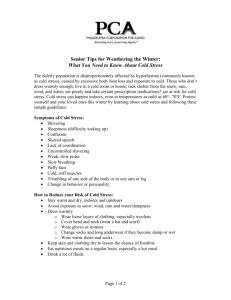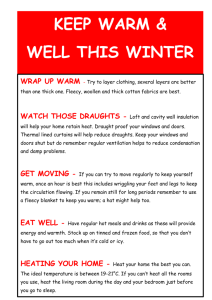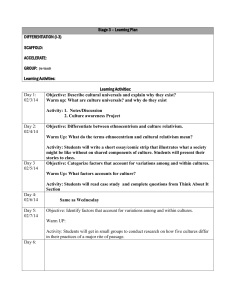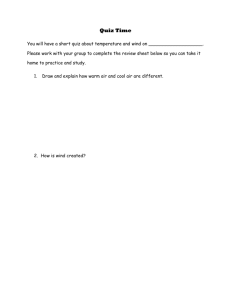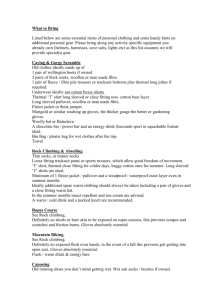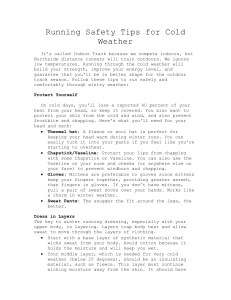Work in Cold Dry Weather
advertisement
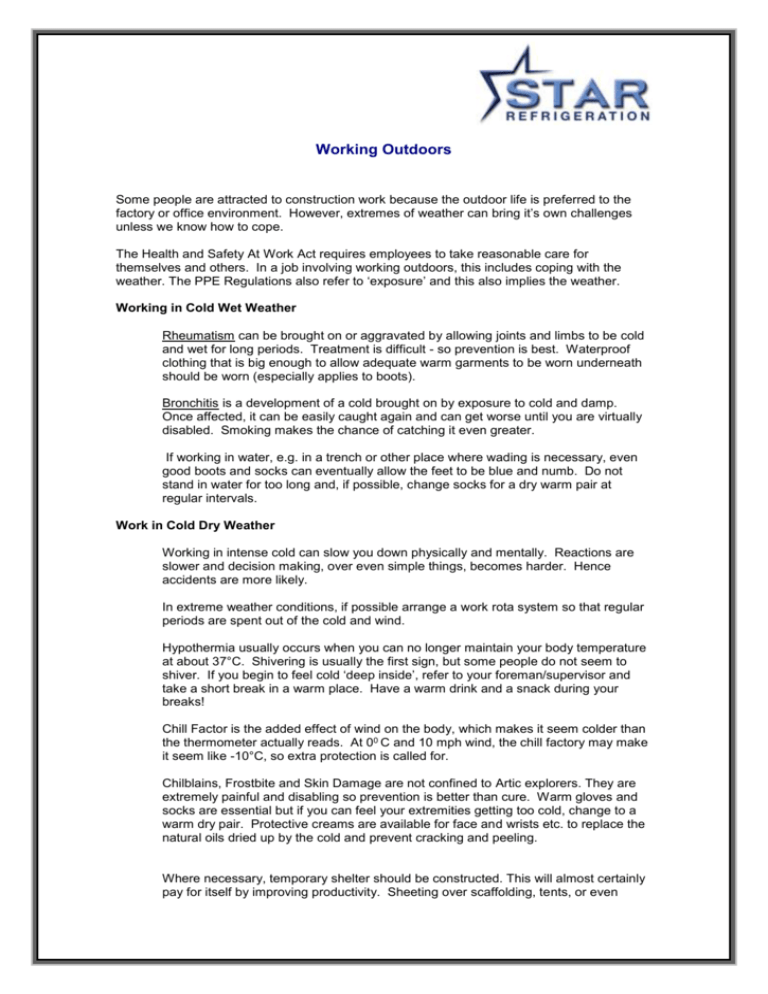
Working Outdoors Some people are attracted to construction work because the outdoor life is preferred to the factory or office environment. However, extremes of weather can bring it’s own challenges unless we know how to cope. The Health and Safety At Work Act requires employees to take reasonable care for themselves and others. In a job involving working outdoors, this includes coping with the weather. The PPE Regulations also refer to ‘exposure’ and this also implies the weather. Working in Cold Wet Weather Rheumatism can be brought on or aggravated by allowing joints and limbs to be cold and wet for long periods. Treatment is difficult - so prevention is best. Waterproof clothing that is big enough to allow adequate warm garments to be worn underneath should be worn (especially applies to boots). Bronchitis is a development of a cold brought on by exposure to cold and damp. Once affected, it can be easily caught again and can get worse until you are virtually disabled. Smoking makes the chance of catching it even greater. If working in water, e.g. in a trench or other place where wading is necessary, even good boots and socks can eventually allow the feet to be blue and numb. Do not stand in water for too long and, if possible, change socks for a dry warm pair at regular intervals. Work in Cold Dry Weather Working in intense cold can slow you down physically and mentally. Reactions are slower and decision making, over even simple things, becomes harder. Hence accidents are more likely. In extreme weather conditions, if possible arrange a work rota system so that regular periods are spent out of the cold and wind. Hypothermia usually occurs when you can no longer maintain your body temperature at about 37°C. Shivering is usually the first sign, but some people do not seem to shiver. If you begin to feel cold ‘deep inside’, refer to your foreman/supervisor and take a short break in a warm place. Have a warm drink and a snack during your breaks! Chill Factor is the added effect of wind on the body, which makes it seem colder than the thermometer actually reads. At 00 C and 10 mph wind, the chill factory may make it seem like -10°C, so extra protection is called for. Chilblains, Frostbite and Skin Damage are not confined to Artic explorers. They are extremely painful and disabling so prevention is better than cure. Warm gloves and socks are essential but if you can feel your extremities getting too cold, change to a warm dry pair. Protective creams are available for face and wrists etc. to replace the natural oils dried up by the cold and prevent cracking and peeling. Where necessary, temporary shelter should be constructed. This will almost certainly pay for itself by improving productivity. Sheeting over scaffolding, tents, or even working in the lee of the site hut are possibilities. Somewhere warm and dry to take refreshments and dry clothes is required by the Construction (Heath & Welfare) regulations. Long sleeved vests, long-johns, thermal underwear etc may be the butt of jokes, but if they keep you war it is better to be laughed at for a few minutes then unhealthy for the rest of your life. Work in Hot Weather and Conditions Sunburn is very common, very painful, but easily avoided. Glare from an overcast sky can also cause burns on sensitive skins. Stripping off too hastily or for too long is unwise, especially for fair skinned people and near midday. Ultra violet light causes premature ageing (wrinkling) of skin and increases chances of skin cancer. Thinning of the ozone layer in upper atmosphere is allowing more ultra violet through. Sun Blocking lotion is recommended but take account of how long you will be in the sun, a high protective index is probably required. Prickly Heat is brought on by working in hot conditions. It causes groups of small itchy spots on the skin. Frequent washing to remove sweat, wearing loose cotton clothes and, if possible, periods of work out of the hot location are advised. Heat Exhaustion is the combination of high temperature, exertion and loss of fluid and salt through sweating. It can be dangerous if not recognised. Fainting, cramp and nausea can overcome the unwary. Frequent rests and plenty of cool, but not iced, drinks are necessary. For more information visit www.hse.gov.uk



